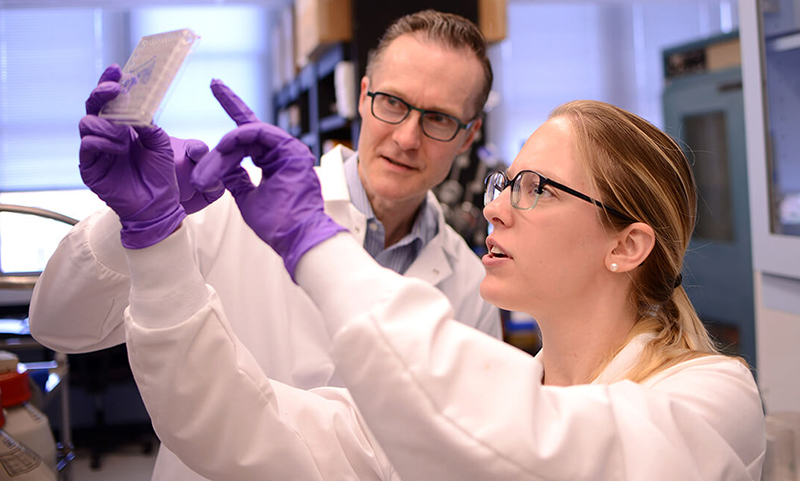The immune system is often framed as the part of our bodies responsible for fighting infection. But a key part of immunity involves restraining that battle-ready immune cell army so its artillery is only trained upon true threats.
This element of immune regulation—and how it can go awry in cancer and autoimmune conditions—is where Oliver Garden, Chair of Penn Vet’s Department of Clinical Sciences and Advanced Medicine and the Corinne R. and Henry Bower Professor of Medicine, rests his scientific attention.
For the first decade of his research career, Garden focused his attention on regulatory T cells (Tregs). These lymphoid cells play a critical role in immunosuppression, and have the potential to reduce or prevent harmful autoimmune and inflammatory immune responses.
Using Tregs from mice, humans, and, most recently, dogs, Garden’s laboratory has identified the critical role of several signaling cascades in the induction, function, and development of Tregs.
In the last decade, Garden’s lab has shifted in focus to another key player in holding the immune response in check: myeloid-derived suppressor cells.
“The current projects in the lab are all about regulation, and how to overcome deranged regulation in autoimmune disease and cancer,” Garden said. “We have a keen interest in Tregs, but we also came to realize that immune regulation is multifactorial, and doesn’t only involve lymphoid cells.”
Read more at Penn Vet News.








